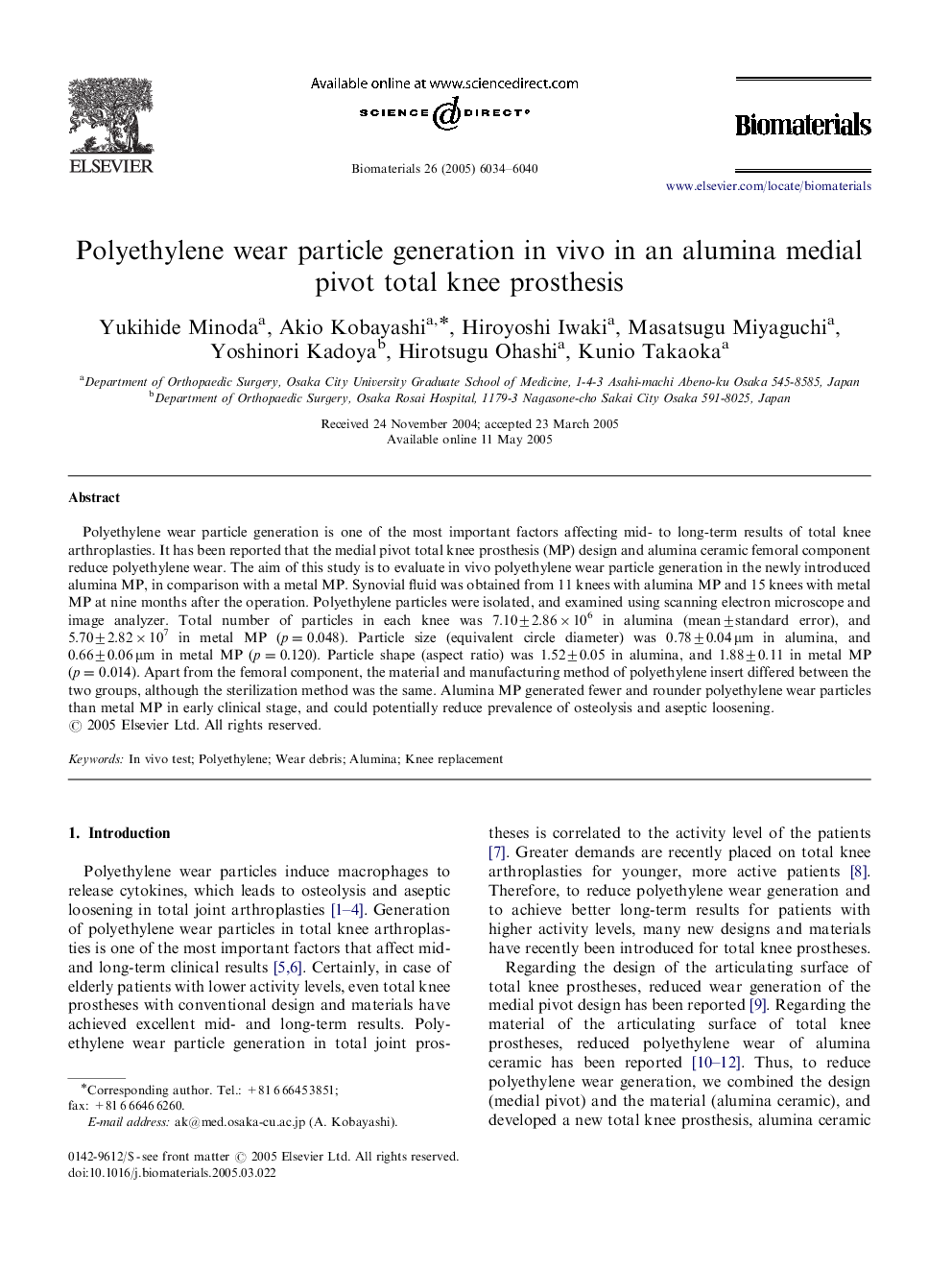| کد مقاله | کد نشریه | سال انتشار | مقاله انگلیسی | نسخه تمام متن |
|---|---|---|---|---|
| 12221 | 785 | 2005 | 7 صفحه PDF | دانلود رایگان |

Polyethylene wear particle generation is one of the most important factors affecting mid- to long-term results of total knee arthroplasties. It has been reported that the medial pivot total knee prosthesis (MP) design and alumina ceramic femoral component reduce polyethylene wear. The aim of this study is to evaluate in vivo polyethylene wear particle generation in the newly introduced alumina MP, in comparison with a metal MP. Synovial fluid was obtained from 11 knees with alumina MP and 15 knees with metal MP at nine months after the operation. Polyethylene particles were isolated, and examined using scanning electron microscope and image analyzer. Total number of particles in each knee was 7.10±2.86×106 in alumina (mean±standard error), and 5.70±2.82×107 in metal MP (p=0.048p=0.048). Particle size (equivalent circle diameter) was 0.78±0.04 μm in alumina, and 0.66±0.06 μm in metal MP (p=0.120p=0.120). Particle shape (aspect ratio) was 1.52±0.05 in alumina, and 1.88±0.11 in metal MP (p=0.014p=0.014). Apart from the femoral component, the material and manufacturing method of polyethylene insert differed between the two groups, although the sterilization method was the same. Alumina MP generated fewer and rounder polyethylene wear particles than metal MP in early clinical stage, and could potentially reduce prevalence of osteolysis and aseptic loosening.
Journal: Biomaterials - Volume 26, Issue 30, October 2005, Pages 6034–6040